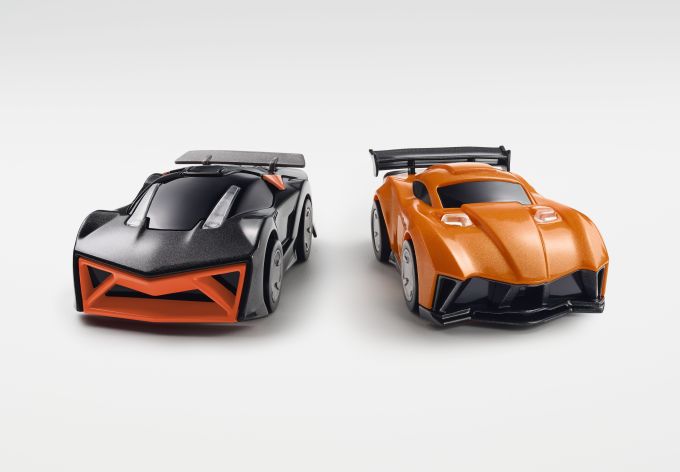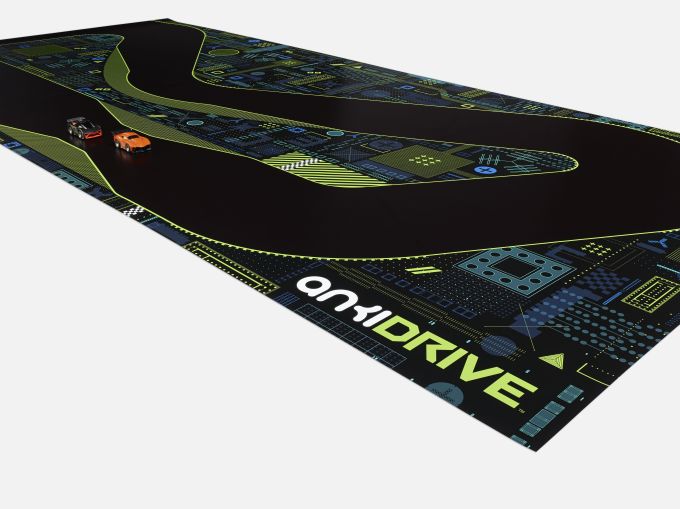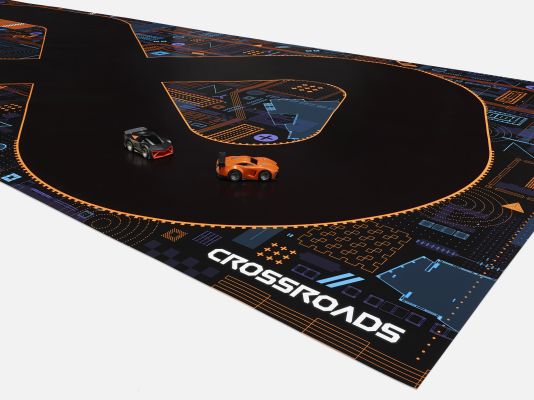There are a couple of things that differentiate Anki from any other robotics company. First, it’s the only one I know of to launch on an Apple keynote stage, with an introduction from Tim Cook. Second, it’s one of a select few that’s actually advancing the robotics industry by building toys — not industrial equipment.
The Anki Drive system — an app and set of cars that are driven by users or allowed to run autonomously via its complex artificial intelligence — is a Trojan horse. It lets Anki work on very difficult problems related to positioning, navigation and communication in robotics while producing a very fun game that sells off the shelf.
The game itself is reminiscent of the slot car tracks my dad and I used to battle each other out on when I was young. But the Anki Drive track has no slots, and the controllers are iPhones and iPads instead of a trigger.

Today, Anki is announcing two new cars, two new tracks and a ‘race’ mode to go along with the standard ‘battle’ mode. The cars have their own specialties — Corax can mount multiple virtual ‘weapons’ for more battle-readiness and Hadion is faster as it has access to Turbo Boost right out of the box. The cars are $69 and available via retail outlets like Apple stores, Best Buy later this year and online at Anki and Amazon.
The two new tracks, one with a crossover section and another with a bottleneck, complement the single track already available from Anki. The tracks will be available early next month for $99.
The new game mode, Race, lets you set a specific number of laps to finish as a victory condition — rather than simply knocking the other cars out a certain number of times. The new race mode, new items and other software upgrades are all free to current Anki Drive owners. A transparent-to-the-user firmware update will give the cars the new information they need to play on the new tracks after the app is updated.
There are also a series of updates to the AI opponents you’re competing against when you play.
We made it out to Anki’s office in San Francisco to check out the new cars and tracks.
There are several interesting things going on with the update, and I spoke to co-founder and president of Anki Drive Hanns Tappeiner about the robotics challenges here.
One of the challenges that Anki has been working on overcoming is how to determine and track the position of their robotic cars. To solve that, they created a complex pattern that’s embedded in the material of the tracks themselves. Each car is equipped with a camera and an infrared light that exposes the pattern to the cars, allowing them to calculate speed, trajectory and position at around 500 times per second.
“If a robot knows where he is…” says Tappeiner about the concepts behind the positioning technology, “he will be able to do smart things in that environment.”
The fact that Corax has been deemed a ‘higher-level’ car — which must be beaten in battle to be unlocked, rather than just purchased — is a very ‘video-game’ concept. Bringing that concept to physical objects is just part of how Anki is creating this sort of translation language for robotics that allows virtual world rules to govern the way machines interact with the ‘real world’.

There’s an element of industrial design at work here as well. Corax is actually shaped in a way that gives it a nearly perfect center of balance, something anyone who loves cars will tell you is the first step to producing a better handling racing car. The new cars were designed by Hollywood artist Harald Belker, who has worked on a variety of projects like TRON: Legacy, Minority Report and the new Total Recall.
While the concepts that are being applied here are very much in the ‘video game’ realm, the robotics challenges being tackled are incredibly applicable to the industry at large. Yes, Anki’s positioning calculations are being done to make the new race mode fun — but they’re also just as applicable to routing machines through a factory or cars through a pre-determined environment. The idea of locking down the AI of a real-world object until pre-determined conditions are met has applications in security and home automation, among other areas.
That’s what’s so interesting and clever about Anki’s product, to me — an avid gamer. I’ve been learning the ‘rules’ of hundreds of different systems and AIs of various complexity for over 20 years of my game playing career. But Anki is crafting a system that allows them to transpose those systems on the real world, which not only excites the gamer in me, it also makes me excited about the possibilities that result when we figure out how to make robotic systems understand and interact with the world we live in.
There’s also the fact that Anki is able to do all of these calculations and run the AI of all of the cars locally, using the processing power of the iPhone or iPad in your hands. That’s pretty incredible and says some interesting things about the way that these personal computers we carry will act as the brains of the every day ‘smart’ items around us.
For now, it’s just a game, and Anki’s immediate success will depend on whether it’s fun and engaging and can sell well. While those challenges seem so mundane in comparison to the possibilities, they’re still very real. For now, they’ve had a super high profile launch — and Tappeiner says that they’re enjoying adding real ‘upgrades’ to the product that don’t require any additional purchase.
“It’s the first toy that gets better as you own it, not worse,” he notes. And I’ve got a box of tarnished track and burned-out slot cars somewhere that agrees.
